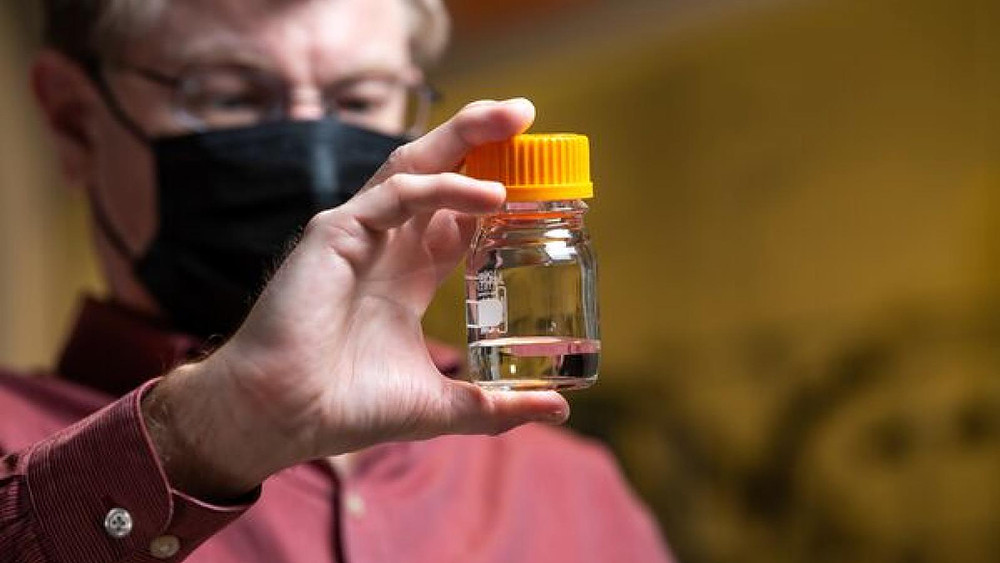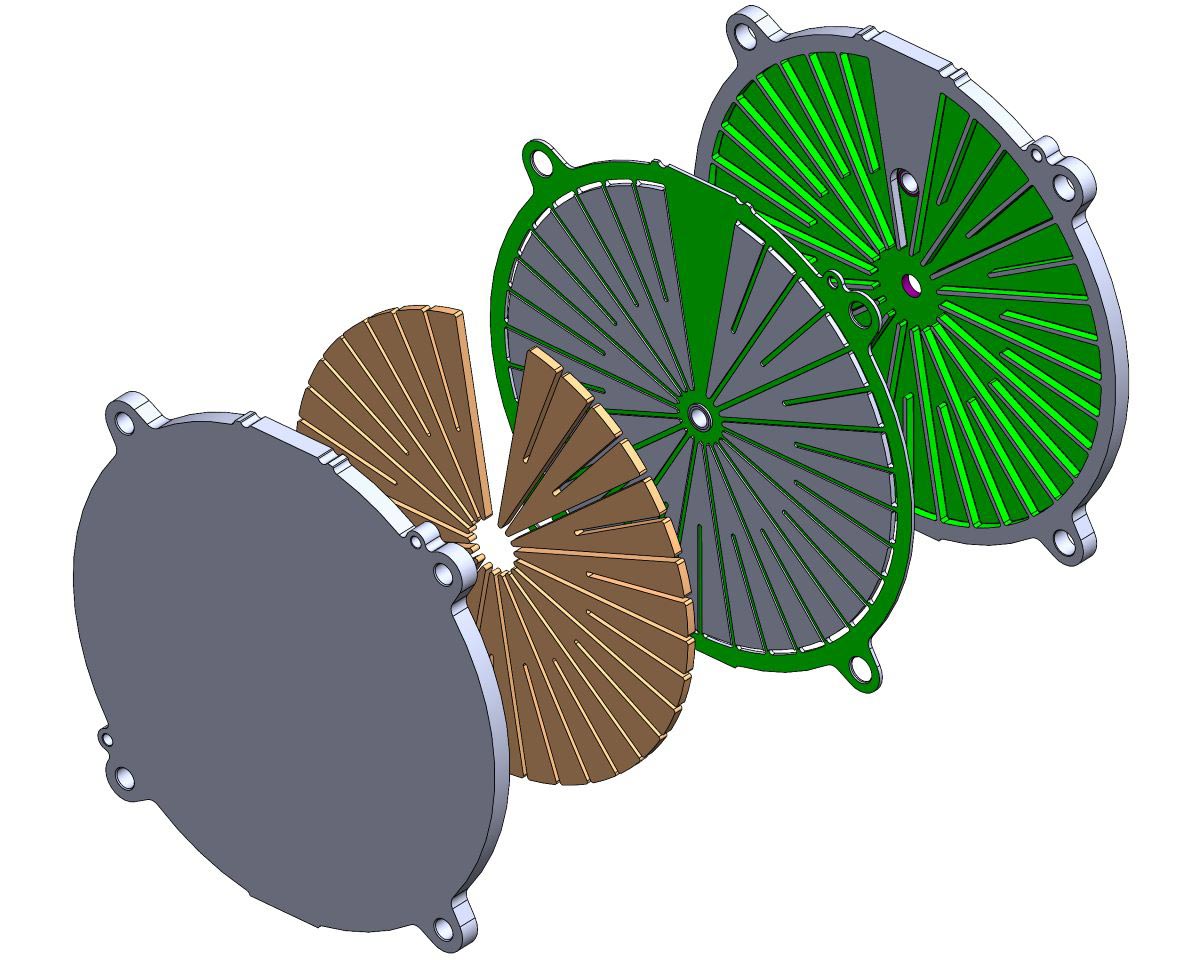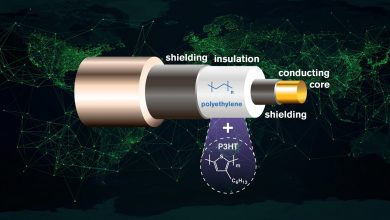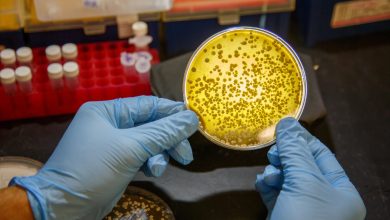
New catalyst and microchannel reactors improve efficiency and cost.
A patented process for converting alcohol sourced from renewable or industrial waste gases into jet or diesel fuel is being scaled up at the U.S. Department of Energy’s Pacific Northwest National Laboratory with the help of partners at Oregon State University and the carbon-recycling experts at LanzaTech. Two key technologies power the energy-efficient fuel production units.
A single-step chemical conversion streamlines what is currently a multi-step process. The new PNNL-patented catalyst converts biofuel (ethanol) directly into a versatile “platform” chemical called n-butene. A microchannel reactor design further reduces costs while delivering a scalable modular processing system.
Watch how a PNNL-patented catalyst, combined with a unique microchannel reactor, can convert ethanol to a useful chemical with multiple commercial uses, including jet fuel. Credit: Video by Eric Francavilla; Animation by Mike Perkins | Pacific Northwest National Laboratory
The new process would provide a more efficient route for converting renewable and waste-derived ethanol to useful chemicals. Currently, n-butene is produced from fossil-based feedstocks using the energy-intensive cracking—or breaking down—of large molecules. The new technology reduces emissions of carbon dioxide by using renewable or recycled carbon feedstocks. Using sustainably derived n-butene as a starting point, existing processes can further refine the chemical for multiple commercial uses, including diesel and jet fuels, and industrial lubricants.
“Biomass is a challenging source of renewable energy because of its high cost. Additionally, the scale of biomass drives the need for smaller, distributed processing plants,” said Vanessa Dagle, co-primary investigator of the initial research study, which was published in the journal ACS Catalysis. “We have reduced the complexity and improved efficiency of the process, while simultaneously reducing capital costs. Once modular, scaled processing has been demonstrated, this approach offers a realistic option for localized, distributed energy production.”
Micro-to-macro jet fuel
In a leap toward commercialization, PNNL is partnering with long-time collaborators at Oregon State University to integrate the patented chemical conversion process into microchannel reactors built using newly developed 3D printing technology. Also called additive manufacturing, 3D printing allows the research team to create a pleated honeycomb of mini-reactors that greatly increase the effective surface-area-to-volume ratio available for the reaction.
“The ability to use new multi-material additive manufacturing technologies to combine the manufacturing of microchannels with high-surface-area catalyst supports in one process step, has the potential to significantly reduce the costs of these reactors,” says OSU lead researcher Brian Paul. “We are excited to be partners with PNNL and LanzaTech in this endeavor.”

“Due to recent advances in microchannel manufacturing methods and associated cost reductions, we believe the time is right to adapt this technology toward new commercial bioconversion applications,” said Robert Dagle, co-primary investigator of the research.
The microchannel technology would allow commercial-scale bioreactors to be built near agricultural centers where most biomass is produced. One of the biggest impediments to using biomass for fuel is the need to transport it long distances to large, centralized production plants.
“The modular design reduces the amount of time and risk necessary to deploy a reactor,” said Robert Dagle. “Modules could be added over time as demand grows. We call this scale up by numbering up.”
The one-fourth commercial-scale test reactor will be produced by 3D printing using methods developed in partnership with OSU and will be operated on the Richland, Wash. campus of PNNL.

Once the test reactor is completed, PNNL commercial partner LanzaTech will supply ethanol to feed the process. LanzaTech’s patented process converts carbon-rich wastes and residues produced by industries, such as steel manufacturing, oil refining and chemical production, as well as gases generated by gasification of forestry and agricultural residues and municipal waste into ethanol.
The test reactor will consume ethanol equivalent to up to one-half dry ton biomass per day. LanzaTech has already scaled up the first generation of PNNL technology for jet fuel production from ethanol and formed a new company, LanzaJet, to commercialize LanzaJet™ Alcohol-to-Jet. The current project represents the next step in streamlining that process while providing additional product streams from n-butene.
“PNNL has been a strong partner in developing ethanol-to-jet technology that LanzaTech spin-off company, LanzaJet, is employing in multiple plants under development,” said Jennifer Holmgren, LanzaTech CEO. “Ethanol can come from a variety of sustainable sources and as such is an increasingly important raw material for sustainable aviation fuel. This project shows great promise for alternate reactor technology which could have benefits for this key pathway to decarbonization of the aviation sector.”
A tunable process
Since their early experiments, the team has continued perfecting the process. When ethanol is passed over a solid silver-zirconia-based catalyst supported on a silica, it performs the essential chemical reactions that convert ethanol to either n-butene or, with some modifications to the reaction conditions, butadiene.
But even more importantly, after prolonged-duration studies, the catalyst remains stable. In a follow-up study, the research team showed that if the catalyst loses activity, it can be regenerated by a simple procedure to remove coke―a hard carbon-based coating that can build up over time. An even more efficient, updated catalyst formulation will be used for scale-up.
“We discovered the concept for this catalyzed system that is highly active, selective, and stable,” said Vanessa Dagle. “By adjusting the pressure and other variables, we can also tune the system to generate either butadiene, a building block for synthetic plastic or rubber or an n-butene, which is suitable for making jet fuels or products such as synthetic lubricant. Since our initial discovery, other research institutions have also begun exploring this new process.”
In addition to Vanessa Dagle and Robert Dagle, the catalyst development team included PNNL researchers Austin Winkelman, Nicholas Jaegers, Johnny Saavedra-Lopez, Jianzhi Hu, Mark Engelhard, Sneha Akhade, Libor Kovarik, Vassilliki-Alexandra Glezakou, Roger Rousseau and Yong Wang. Senior scientist Susan Habas from the National Renewable Energy Laboratory also contributed. PNNL staff scientists Ward TeGrotenhuis, Richard Zheng and Johnny Saavedra-Lopez contributed to the development of the microchannel technology.
The chemical conversation research was supported by the U.S. Department of Energy (DOE), Office of Energy Efficiency and Renewable Energy, within the Chemical Catalysis for Bioenergy (ChemCatBio) Consortium sponsored by the Bioenergy Technology Office (BETO). ChemCatBio is a DOE national-lab-led research and development consortium dedicated to identifying and overcoming catalysis challenges for the conversion of biomass and waste resources into fuels, chemicals, and materials. The public-private, scale-up partnership is being supported by DOE-BETO and the State of Oregon’s University Innovation Research Fund.





